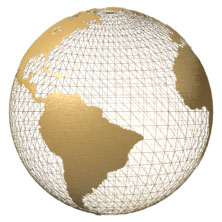| GigaPackets |
Toll Free Support: (888) 848-8749 |
|
Fixed Wireless Access

Managed SDN & SD-WAN
Dark Fiber - Wavelength Service
Ethernet and SONET Fiber Optic Connections
The competition between traditional SONET/SDH and IP network Ethernet means lower pricing on fiber optic connections.Fiber optic bandwidth is now well within the reach of most medium and large companies, and even smaller organizations that are bandwidth driven. What’s changed? Lower prices and more options. That’s good news for large bandwidth users. Let’s take a look at what’s available that you may not know about.
Two Competing Technologies
Fiber optic bandwidth services tend to fall into two categories. There is the traditional time division multiplexed technology that came out of telephone company research. Competing with those legacy services are the newer IP-centric networks being offered by competitive service providers as well as incumbent telecom carriers.OC-3 Fiber Optic Bandwidth
The fiber optic bandwidth service that is most familiar is called OC-3 or Optical Carrier - level 3. It runs at 155.52 Mbps, commonly referred to as 156 Mbps. What you might not realize is that some lower speed services travel part or all of the way from the service provider to your location on fiber optic cabling. These include T1 and DS3, generally thought of as copper-based telecom services. It’s up to the carrier how they want to transport their bandwidth services, but it’s made easier because both T1 and DS3 are easily multiplexed onto OC-3.Legacy Telecom Technology
Why is that? It’s because T1, DS3 and OC-3 were all developed by the telephone industry for its own use. The smallest element is called a DS0, which is 64 Kbps of bandwidth organized as 8 data bits x 8 Kbps sampling frequency. A DS0 is exactly the size needed to carry one digitized telephone conversation. Package 24 of these DS0 channels together and you have a T1 line running at 1.5 Mbps. Package 28 T1 lines or 672 DS0 channels together an you have DS3 service at 45 Mbps. Now, package 3 DS3 services together and you have OC-3 at 156 Mbps. The device that does the packaging and unpackaging is called an Add/Drop Multiplexer or ADM.SONET/ SDH Services
OC-3 fiber optic service is part of an industry standard known as SONET for Synchronous Optical NETwork. SONET is a US standard. The equivalent international fiber optic standard is called SDH for Synchronous Digital Hierarchy. As you probably know, there are higher speed fiber services in the same OCx family. Commonly available services include OC-12 at 622 Mbps, OC-24 at 1.244 Gbps, OC-48 at 2.488 Gbps, OC-192 at 9.953 Gbps and OC-768 at 39.812 Gbps. That last one is primarily used by service providers themselves.The Cost & Availability Conundrum
What’s characterized SONET fiber optic services for decades is high cost and very limited availability. Your best bet for connecting to these high bandwidth services has been at a colocation center, also called a carrier hotel. There’s little to no construction cost to get that level of bandwidth in a colo center, because the carriers have a presence within the building. It’s just a matter of getting a fiber optic cable drop from their equipment cage to yours.Competition From Ethernet
SONET services delivered to your door have also come down in price due to increasing demand from business and heavy competition from another service called Carrier Ethernet. This is Ethernet like you have on your LAN, but extended into the metropolitan and wide area networks. The most familiar name for this service is Metro Ethernet. That’s also where you are most likely to find it - in major metropolitan areas.The Metro Ethernet Story
Metro Ethernet is a packet or IP-based network service rather than a synchronous TDM service. One difference is that you don’t need special interface circuitry to connect to an Ethernet service. After all, it’s Ethernet and it’s delivered to you on an Ethernet connector. The other difference is the scalability of services. Common speeds are 10 Mbps, 100 Mbps and 1000 Mbps to mirror the standard network speeds. You can also get 10 Gbps now. But you are not limited to these particular bandwidth increments. Most carriers offer a wide variety of speeds from 10 Mbps to 10 Gbps. If you install an Ethernet port at the highest speed you expect to use, you can pay for a smaller bandwidth increment to get started and then upgrade to a higher speed when needed. Often, all that is required is a phone call to your service provider to request an increase in bandwidth.Find Fiber Optic Bandwidth Services Now
Optical carrier services, including Fast Ethernet & Gigabit Ethernet over Fiber, SONET, Wavelengths, Dark Fiber and other high speed low latency digital line services, including Managed SDN Software Defined Networking and SD-WAN, for commercial business and organizational applications. Find out what network services and pricing are available now for your commercial business building anywhere in the U.S. Simply call 1-888-848-8749 or use this handy form...
Fiber Bandwidth & Cloud Services Inquiry
Thank you for your interest. A technology services expert will be in touch soon. Please provide accurate phone & email contact information or call toll free for support anytime at 1-888-848-8749. All information you provide will be used only to support your inquiry.

|